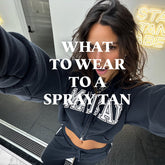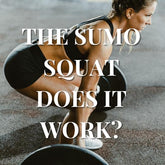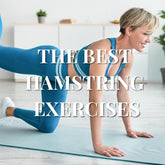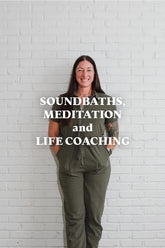Pilates Workout at Home: A Comprehensive Guide to Strength and Flexibility

Table of Contents
- Introduction
- Items Needed for Pilates at Home
- At Home Pilates Workouts
- What to Wear to Pilates
- Is Pilates Strength Training?
- How Much Are Pilates Classes?
- Pilates Abs: Strengthening Your Core
- Pilates vs. Barre: Which Is Right for You?
- Pilates vs. Weight Lifting
- Pilates vs. Yoga
- How Often Should You Do Pilates?
- How Many Calories Does Pilates Burn?
- Why Does Pilates Work?
- How to Start Pilates
- Conclusion
Introduction
In today's world it's easy to be overwhelmed with stress, a busy work life, and taking care of those around you.
Add staying in shape to this and it might feel like you don't have enough time in the day to do everything.
Thankfully there are ways to stay in shape in the comfort of your own home, on your own time. Pilates, developed by Joseph Pilates in the early 20th century, has evolved into a popular form of exercise that promotes strength, flexibility, and body awareness. In this blog, we'll talk about the benefits that Pilates offers whether pursued at home or within the studio atmosphere.
No matter if you're a beginner or an experienced practitioner, this comprehensive guide will provide you with valuable insights into starting and maintaining your Pilates journey.
Items Needed for Pilates at Home
Pilates is a versatile exercise method that can be done with minimal equipment. If you're planning to practice Pilates at home, you'll need a few essential items to make your workouts safe and effective. Here's a list of the basic items you should consider:
- Exercise Mat: A comfortable, non-slip exercise mat is crucial for Pilates. It provides cushioning and support for your spine and joints during floor exercises.
- Pilates Ball: Also known as a stability ball or Swiss ball, this inflatable ball can be used to add challenge and variety to your Pilates routine. It's great for core exercises and improving balance.
- Pilates Resistance Bands: Resistance bands are versatile tools that come in various resistance levels and can add challenge to your movements, targeting different muscle groups. They are excellent for building strength and flexibility.
- Pilates Ring (Magic Circle): This small, flexible ring provides resistance for both upper and lower body exercises. It's especially useful for toning the inner and outer thighs.
- Yoga Block: While not exclusive to Pilates, a yoga block can be handy for modifying exercises and providing support during certain movements, especially for beginners.
- Pilates Reformer (Optional): If you're committed to Pilates and have the space and budget, consider investing in a Pilates reformer. It's a versatile piece of equipment that provides endless exercise variations.
Remember that while these items can enhance your Pilates practice, you can still perform many Pilates exercises using just your body weight. Start with the basics, and as you progress, you can gradually add equipment to challenge yourself further.
Pilates at Home: Transforming Your Living Space into a Personal Studio
Pilates at home has become increasingly popular, offering a convenient and effective way to maintain your fitness routine without leaving your house. A home pilates workout can be just as beneficial as a studio session when done correctly. Whether you're following videos or creating your own routine at home, the key is consistency and proper form.
To start your home pilates journey, consider these tips:
- Create a dedicated space: Clear an area in your home for your workout, ensuring you have enough room to move freely.
- Invest in quality equipment: While many exercises can be done with just a yoga mat, adding items like resistance bands can enhance your workout.
- Follow structured programs: Look for a 10 - 30-minute pilates workout or full body routine to ensure a balanced practice.
- Stay consistent: Aim for regular sessions, such as a daily pilates exercise or a 30 min workout a few times a week.
- Explore various resources: YouTube can offer guidance and variety to your home practice.
Remember, whether you're doing a pilates and workout combination or focusing solely on pilates moves at home, the goal is to engage your core, improve flexibility, and build strength throughout your body.
At Home Pilates Workouts
5 Minute Warm Up Routine: Always begin your Pilates session with a proper warm-up to prepare your body for the exercises ahead.
Neck Stretch: Sit cross-legged on your mat, place your right hand on your left ear, and gently tilt your head to the right. Hold this for 15-30 seconds and repeat on the other side.
Shoulder Rolls: Sit with legs crossed or extended in front of you and roll your shoulders backward in a circular motion for 15 seconds then switch direction to forward for 15 seconds.
Cat-Cow Stretch: Get on your hands and knees. While exhaling arch your back like a cat, while inhaling arch your back downward like a cow. Repeat this for 1 minute.
Child's Pose: Sit on your heels and reach your arms forward, resting your forehead on the mat. Hold for 30 seconds and perform 3 sets.
10 Minute Core Strengthening Routine: This will focus on the fundamental aspects of Pilates.
Pelvic Tilt: Lie on your back with your knees bent and feet flat on the floor, hip width apart. As you gently exhale, tilt your pelvis upward, pressing your lower back into the mat. Inhale to return to the starting position. Repeat this 10 times, holding the tilt for 10 seconds each.
The Hundred: Lie on your back with your legs raised at a 90 degree angle (knees bent), with your arms reaching forward. Lift your head, neck, and shoulders off the mat and pulse your arms up and down while breathing in for 5 counts and out for 5 counts. Repeat for 2-3 sets, at 30 seconds - 1 minute each.
Leg Circles: Lie on your back with your legs extended towards the ceiling, keeping your arms flat on the mat by your sides. Inhale to cross one leg over your body, circle it down and around. Exhale as it returns to the starting position. Repeat 10 circles in each direction for each leg.
Plank: Come into an upward push up position, with your hands directly under your shoulders and your body in a straight line. Hold for 30 seconds - 1 minute and perform 3 sets.
10 Minute Flexibility Routine: This routine focuses on improving flexibility and body balance.
Roll-Up: Sit with your legs extended and arms over head. Roll your spine up and down, one vertebra at a time, for 1 minute. Perform 3 sets.
Single Leg Stretch: Sit with one leg extended and the other leg bent - reach forward toward your toes. Hold for 30 seconds - 1 minute. Perform 3 sets.
Spine Twist: Sit with your legs crossed and twist your torso to one side, use your hands to assist for a deeper stretch. Hold 10 seconds for each side, perform 5 times.
Child's Pose: Sit on your heels and reach your arms forward, resting your forehead on the mat. Hold for 30 seconds. Perform 3 sets.
What to Wear to Pilates
Here's some guidelines on what to wear to Pilates to ensure ease of movement and a positive workout experience:
Comfortable Workout Clothing: Choose for breathable fabrics like nylon, spandex, or polyester. These will help keep you dry and comfortable during your session.
Leggings or Capris: These provide coverage and freedom of movement for exercises that involve leg lifts, stretches, and leg circles. They are also so cute. They come in many variations from butt lifting scrunch, to body shaping and everything in between. Makai offers a collection of leggings that help contour the body.
Fitted Top: Choose a comfortable top like a tank top, sports bra, or fitted shirt. Anything that allows for unrestricted arm movement.
Grippy socks: These help prevent feet from slipping or sliding on the mat during exercise. It is always okay to go barefoot.
Hair Tie: If you have long hair, bring a hair tie or scrunchie to keep your hair out of your face.
Oversized Warm Up Top: Wearing a sweatshirt or hoodie to Pilates can help keep your muscle warm prior to your workout which can help prevent injury. Plus, who doesn't want to look cute for class.
Jewelry and Accessories: Remove jewelry or accessories as they can get in the way or cause discomfort during exercises.
Is Pilates Strength Training?
While Pilates does involve resistance and can contribute to muscular development, it is not typically considered a traditional strength training method like weight lifting or power lifting.
Pilates focuses on building core strength, which is fundamental to overall body stability and performance. The movements and exercises engage various muscle groups with an emphasis on core muscles. This helps with muscular endurance and a degree of strength improvement.
Pilates can be a great complement to a strength training regimen, by promoting core stability and enhancing overall body balance.
Does Pilates Build Muscle?
Many people wonder about the muscle-building capabilities of Pilates. While it may not build bulk like traditional weightlifting, Pilates can indeed contribute to muscle development, particularly in creating lean, toned muscles.
Here's how Pilates contributes to muscle gain:
- Resistance training: Pilates exercises, especially those using equipment like the reformer, provide resistance that challenges your muscles.
- Full-body engagement: Many Pilates moves require engaging multiple muscle groups simultaneously, promoting overall muscular development.
- Eccentric contractions: Pilates emphasizes the lengthening phase of muscle contractions, which is excellent for building strength and improving muscle tone.
- Core focus: Pilates is particularly effective for strengthening core muscles, including deep abdominal muscles often neglected in other forms of exercise.
- Progressive overload: As you advance in your practice, you can increase the difficulty of exercises, promoting continued muscular development.
While Pilates may not build muscle mass as quickly as heavy weight training, it offers a balanced approach to muscle development that complements other forms of exercise. Consistent practice can lead to noticeable improvements in muscle tone and strength, regardless of whether you're doing mat work or using specialized equipment.

How Much Are Pilates Classes?
On average, classes can range from $10-$100+ per session depending on various factors such as; location, type of class, and instructor expertise.
Group classes tend to be more affordable with prices at the lower end range. Private sessions, which have more individualized instruction are typically more expensive per session.
Pilates vs. Barre: Which Is Right for You?
When it comes to Pilates vs Barre, it really depends on what your fitness goals are. Each has a different focus benefits and appeal.
Pilates focuses on low impact exercises that primarily target core strength, flexibility, and overall body stability.
Barre focuses on ballet-inspired workouts that combine elements of dance and yoga. It has a strong emphasis on isometric movements and small repetitive movements.
The benefits of Pilates include: improved posture, increased flexibility, balance, coordination, and enhanced muscular endurance. The benefits of Barre include: enhanced muscular endurance, posture, and lean muscle build.
Pilates is ideal for those looking to improve core strength, flexibility, body awareness, as well as a balanced workout experience.
Barre is ideal for those who enjoy dance inspired workouts and those who want to sculpt and tone their muscles.

Pilates vs. Yoga
Yoga focuses on a more holistic practice that combines physical postures, breath control, relaxation, and sometimes meditation to promote physical, mental, and emotional wellness.
Benefits of Yoga include improved flexibility, balance, strength, and reduce stress. Yoga is often chosen for its mindfulness and relaxation aspects.
Ideal for those who are seeking a holistic approach to fitness that includes a connection to mind and body.
When it comes to Yoga vs Pilates, some people prefer the structured and fitness focused nature of Pilates. While others enjoy the holistic mindfulness aspects of Yoga.

How Often Should You Do Pilates?
For beginners, if you're new to Pilates, starting out with 2-3 sessions per week is a good way to build familiarity with the exercises and allow your body to adapt. This frequency can help with your proper form and technique.
For intermediate practitioners, aim for 3-4 sessions a week. This frequency can help you further develop your core strength and flexibility. Also consider exploring different Pilates routines and exercises to keep your practice engaging and challenging.
For professionals, 4-5 sessions per week, or more depending on your fitness level and specific goals. Remember to incorporate a mix of mat Pilates, equipment-based Pilates, and specialized classes to challenge your body. Also stay up to date with the latest development in Pilates techniques and principles.
Regardless if you're a rookie or a pro, be sure to always listen to your body.
How Many Calories Does Pilates Burn?
The number of calories that Pilates can burn varies depending on a few factors such as: bodyweight, the intensity of the workout, the length of the session, and exercises performed during.
It is important to note that Pilates focuses on strengthening muscles, improving flexibility, and enhancing core stability rather than high intensity training.
Why Does Pilates Work?
Pilates works because it combines core strength, flexibility, balance, and mental focus in a way that promotes overall physical wellness. It has an adaptability and suitability for various fitness levels that make it accessible for many individuals.
How to Start Pilates
- Research local Pilates studios and instructors: Search online for Pilates studios in your area. Look for studios that offer beginner classes, and have some reviews you like.
- Contact the studio or instructor: Consider taking classes with a certified Pilates instructor who can guide you through proper form and technique. Reach out about class availability or find a class schedule. Ask about pricing and any prerequisite for beginners.
- Schedule your first class: Schedule it, it'll make you commit to it!
- Get your attire and mindset ready: Wear comfortable clothing like mentioned before. Approach your first class with an open mindset and a willingness to learn.
- Arrive early & enjoy: Arrive early to fill out any necessary information and get acquainted with the environment. Let the instructor know you're a beginner and ENJOY!
Conclusion
We encourage you to embark on your Pilates journey with confidence. Whether you're aiming to strengthen your core, enhance your flexibility, or simply enjoy a low-impact workout, Pilates at home or in the studio can be a rewarding and fulfilling experience. Embrace the benefits of Pilates and work towards a healthier, more balanced you.
Shop All Women's Activewear :
Limited Edition Pink Workout Sets | Halter Bra's | Scrunch Leggings | Tops | Bottoms | Crop Jackets
Shop All Women's Loungewear:
Lounge Tops | Lounge Bottoms | Crewnecks | Cropped Hoodies | Lounge Shorts | Sweats











